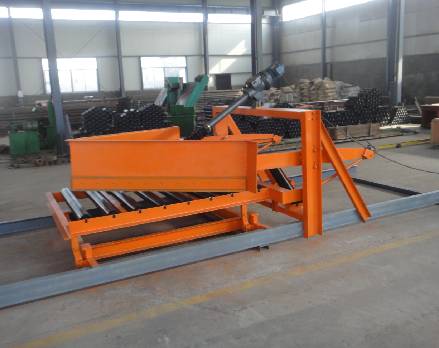 Afrikaans
Afrikaans  Albanian
Albanian  Amharic
Amharic  Arabic
Arabic  Armenian
Armenian  Azerbaijani
Azerbaijani  Basque
Basque  Belarusian
Belarusian  Bengali
Bengali  Bosnian
Bosnian  Bulgarian
Bulgarian  Catalan
Catalan  Cebuano
Cebuano  Corsican
Corsican  Croatian
Croatian  Czech
Czech  Danish
Danish  Dutch
Dutch  English
English  Esperanto
Esperanto  Estonian
Estonian  Finnish
Finnish  French
French  Frisian
Frisian  Galician
Galician  Georgian
Georgian  German
German  Greek
Greek  Gujarati
Gujarati  Haitian Creole
Haitian Creole  hausa
hausa  hawaiian
hawaiian  Hebrew
Hebrew  Hindi
Hindi  Miao
Miao  Hungarian
Hungarian  Icelandic
Icelandic  igbo
igbo  Indonesian
Indonesian  irish
irish  Italian
Italian  Japanese
Japanese  Javanese
Javanese  Kannada
Kannada  kazakh
kazakh  Khmer
Khmer  Rwandese
Rwandese  Korean
Korean  Kurdish
Kurdish  Kyrgyz
Kyrgyz  Lao
Lao  Latin
Latin  Latvian
Latvian  Lithuanian
Lithuanian  Luxembourgish
Luxembourgish  Macedonian
Macedonian  Malgashi
Malgashi  Malay
Malay  Malayalam
Malayalam  Maltese
Maltese  Maori
Maori  Marathi
Marathi  Mongolian
Mongolian  Myanmar
Myanmar  Nepali
Nepali  Norwegian
Norwegian  Norwegian
Norwegian  Occitan
Occitan  Pashto
Pashto  Persian
Persian  Polish
Polish  Portuguese
Portuguese  Punjabi
Punjabi  Romanian
Romanian  Russian
Russian  Samoan
Samoan  Scottish Gaelic
Scottish Gaelic  Serbian
Serbian  Sesotho
Sesotho  Shona
Shona  Sindhi
Sindhi  Sinhala
Sinhala  Slovak
Slovak  Slovenian
Slovenian  Somali
Somali  Spanish
Spanish  Sundanese
Sundanese  Swahili
Swahili  Swedish
Swedish  Tagalog
Tagalog  Tajik
Tajik  Tamil
Tamil  Tatar
Tatar  Telugu
Telugu  Thai
Thai  Turkish
Turkish  Turkmen
Turkmen  Ukrainian
Ukrainian  Urdu
Urdu  Uighur
Uighur  Uzbek
Uzbek  Vietnamese
Vietnamese  Welsh
Welsh  Bantu
Bantu  Yiddish
Yiddish  Yoruba
Yoruba  Zulu
Zulu High-Quality Conveyor Components & Parts for Optimal Performance
Understanding Conveyor Components and Parts
Conveyor systems are essential for modern manufacturing and material handling industries. They provide efficient transport of goods, improving productivity and reducing labor costs. To comprehend how these systems work, it is crucial to understand the various components and parts involved.
1. Belts The Backbone of Conveyor Systems
The conveyor belt is perhaps the most recognizable component. It serves as the surface upon which items are transported. Conveyor belts can be made from different materials, such as rubber, PVC, and metal, depending on the type of material being moved and the environment in which the conveyor operates. Their design can vary, including modular belts, flat belts, and cleated belts, each suited for specific applications.
2. Rollers Facilitating Movement
Rollers are another critical part of conveyor systems. They support the conveyor belt and allow it to move smoothly. Rollers are typically cylindrical and can be fixed or powered. Powered rollers help move items along the conveyor by providing additional propulsion, making them crucial for heavy-duty applications.
3. Drive Motors Powering the System
A drive motor is essential for the operation of a conveyor system. It provides the necessary power to drive the pulley that turns the belt. The type of motor chosen often depends on the load capacity and speed requirements of the conveyor system. Variable speed motors are common, allowing for adjustments in speed for different loads.
conveyor components & parts

4. Pulleys Redirecting Motion
Pulleys are integral to conveyor design, acting as the points at which the belt changes direction. The head pulley drives the belt, while the tail pulley allows for the return path. Proper alignment and tensioning of pulleys are vital for smooth operation and to prevent wear on the belt.
5. Idlers Maintaining Tension
Idlers are rollers that support the belt, maintaining its tension and ensuring it remains taut. This is crucial to avoid slippage and prolong the life of the conveyor system. Additionally, idlers can be designed to suit specific applications, such as trough-shaped idlers that help in carrying bulk materials.
6. Controls and Automation
Today's conveyor systems often incorporate advanced control systems for improved efficiency. These can include sensors, variable frequency drives (VFDs), and programmable logic controllers (PLCs) that automate the operation, enhance safety, and optimize performance.
In conclusion, a thorough understanding of conveyor components and parts is essential for designing, maintaining, or operating these systems. Each component, from belts to motors, plays a critical role in ensuring efficient and effective material handling in various industries. Emphasizing the selection and maintenance of these parts can lead to improved operational reliability and reduced downtime, ultimately benefiting the overall productivity of the operation.
-
Revolutionizing Conveyor Reliability with Advanced Rubber Lagging PulleysNewsJul.22,2025
-
Powering Precision and Durability with Expert Manufacturers of Conveyor ComponentsNewsJul.22,2025
-
Optimizing Conveyor Systems with Advanced Conveyor AccessoriesNewsJul.22,2025
-
Maximize Conveyor Efficiency with Quality Conveyor Idler PulleysNewsJul.22,2025
-
Future-Proof Your Conveyor System with High-Performance Polyurethane RollerNewsJul.22,2025
-
Driving Efficiency Forward with Quality Idlers and RollersNewsJul.22,2025





























